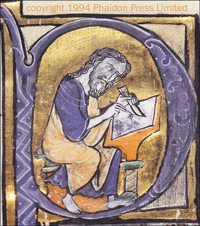Interestingly, Dr. Montessori adds a
paragraph about calligraphy at the end of one her writings on the subject of
the writing process. She writes, “We, instead, prepare a child indirectly not
only for writing but also for calligraphy according to its two basic principles
– beauty of form (by touching beautiful letters) and vigorous execution (by
exercises in filling in figures).”[1]
 |
| Online tutorial for learning calligraphy Calligraphy-skills.com |
These exercises are the typical metal insets, as well as the child utilizing all other metal materials for design work, including the various fraction materials of primary and elementary, other iron mathematics and geometry trays in elementary, even the geometric cabinet insets traced both with fingers and with the fingers. The botany cabinet insets are traced with a small utensil and can also be traced onto paper with a pencil and filled in.
Instead of eventually "teaching" print, we teach calligraphy as an alternative writing form - for the history, the art, the beauty, the control - and many children consider calligraphy the "grown-up way of writing". They know they have reached a level of maturity in their writing, when they are privileged to learn calligraphy.
What age? Some signs of readiness:
- marked decrease in control of handwriting; it becomes sloppy or careless
- wanting to type everything on the computer (or other signs) in a way that suggests it is more about not caring about writing anymore, or a sense of laziness. [2]
- requesting the privilege to write like the grown-ups or some other privilege of maturity
[1] The Discovery of the Child. Chapter 15.
[2] NOTE: we're not saying 'no computer typing'; we're just saying that there may be something more behind the request. Ideally, save computer typing for middle or high school if possible.
[2] NOTE: we're not saying 'no computer typing'; we're just saying that there may be something more behind the request. Ideally, save computer typing for middle or high school if possible.
I didn't realize Dr. Montessori mentioned this. I love how it is incorporated into our atrium at Level II and III. My son really responds to it.
ReplyDeleteI have just corrected the source - it is at the end of chapter 15, rather than chapter 14 :)
ReplyDeleteThe last 5 paragraphs.
:)
I cannot wait to start calligraphy with my son. He could be ready now, and we have the supplies, but I'm going to wait until he expresses interest (or age 9 at the latest to at least introduce it).
Update: about 5 months after this post, my son was interested. "interested" is UNDERstatement. Enthralled; beset; taken away... nope, none of those cut it.
DeleteOh MY!
Definitely taken off!